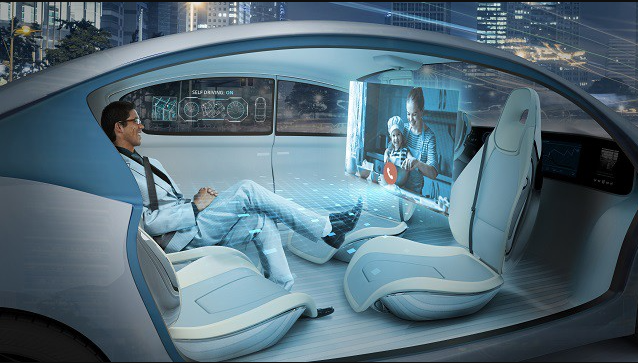
The Future of Autonomous Vehicles: What to Expect
In recent years, autonomous vehicles (AVs) have shifted from science fiction to a tangible reality on our roads. Once considered a futuristic fantasy, self-driving cars are now being tested, improved, and even used commercially in select areas. As we look ahead, the future of autonomous vehicles promises to revolutionize not only how we travel but also how cities function, goods are delivered, and safety is managed on our roads.
So, what can we really expect from the future of autonomous vehicles? In this article, we explore the key developments, technologies, benefits, challenges, and timelines that are shaping the AV landscape.
What Are Autonomous Vehicles?
Autonomous vehicles, often referred to as self-driving cars, are vehicles equipped with advanced sensors, AI algorithms, and control systems that allow them to navigate and drive without human input. They use a combination of GPS, radar, lidar, cameras, and onboard computing power to interpret their surroundings and make driving decisions.
The industry uses a classification system defined by the SAE (Society of Automotive Engineers), which ranges from Level 0 (no automation) to Level 5 (full automation under all conditions).
The Current State of AV Technology
As of 2025, most consumer vehicles on the road are at Level 2 or Level 3, offering partial automation such as lane-keeping, adaptive cruise control, and self-parking. Some tech giants and startups, like Waymo, Tesla, and Cruise, are testing Level 4 autonomous vehicles in specific cities.
These tests are often geo-fenced (limited to certain areas) and monitored closely, but they mark important milestones toward broader adoption.
Key Technologies Driving the Future
The advancement of autonomous vehicles depends on several rapidly evolving technologies:
1. Artificial Intelligence (AI) and Machine Learning
AVs use AI to process data from sensors and make split-second decisions. Machine learning helps vehicles improve over time by learning from driving scenarios and edge cases.
2. Lidar and Radar Systems
Lidar (Light Detection and Ranging) helps AVs detect objects with precision, even in low light. Radar complements lidar by identifying objects’ speed and movement, crucial for obstacle avoidance.
3. 5G Connectivity
Fast and reliable 5G networks allow AVs to communicate in real time with traffic systems, infrastructure, and other vehicles—enabling smoother, safer navigation.
4. High-Definition Mapping
Autonomous cars rely on detailed maps that go beyond standard GPS data. These maps include road layouts, traffic signals, lane markings, and other environmental information.
5. Edge Computing
Instead of relying solely on cloud processing, edge computing allows vehicles to process data locally—reducing latency and improving real-time decision-making.
Expected Benefits of Autonomous Vehicles
The wide-scale adoption of AVs promises transformative benefits across multiple sectors:
1. Improved Road Safety
Human error is responsible for over 90% of road accidents. Autonomous vehicles, with their precision and consistent decision-making, can dramatically reduce accidents caused by fatigue, distraction, or impaired driving.
2. Increased Mobility
Self-driving cars can provide independence to the elderly, disabled, or those unable to drive. AVs could redefine mobility as a service, enabling people to travel more freely.
3. Reduced Traffic Congestion
With vehicle-to-vehicle (V2V) communication, AVs can drive in harmony, optimize routes, and reduce stop-and-go traffic, potentially decreasing traffic jams and travel time.
4. Lower Emissions
Autonomous fleets, especially electric ones, can optimize driving patterns, reduce idle time, and contribute to greener cities by lowering overall emissions.
5. Cost Efficiency in Logistics
Autonomous delivery trucks and drones could cut labor costs, fuel usage, and delivery times, revolutionizing e-commerce, freight, and supply chain operations.
Challenges and Concerns Ahead
Despite the promise, several hurdles remain before AVs become mainstream.
1. Regulation and Legal Frameworks
One of the biggest obstacles is the lack of uniform global or national regulations. Governments must develop new laws on liability, safety standards, and data privacy before mass deployment can occur.
2. Public Trust
Many people are still skeptical about the safety and ethics of self-driving technology. High-profile crashes involving AVs have raised concerns, making it essential for companies to be transparent and prioritize safety.
3. Cybersecurity Risks
Connected vehicles are vulnerable to hacking. Ensuring robust cybersecurity measures is vital to prevent unauthorized access, data theft, or manipulation of vehicle systems.
4. High Development Costs
Building and scaling autonomous vehicles is expensive. The sensors, software, and processing power required are costly, which may limit access in early stages.
5. Job Displacement
Automation in transport could lead to significant job losses in sectors like trucking, delivery, and taxi services. Reskilling and workforce transition programs will be necessary.
Timeline: When Will AVs Be Commonplace?
While early adopters are already using autonomous ride-hailing services in cities like San Francisco and Phoenix, experts believe that widespread adoption will occur in phases:
- 2025–2030: Expansion of Level 4 AVs in controlled urban environments and commercial fleets (e.g., delivery vans, robo-taxis).
- 2030–2040: Wider availability of AVs for personal use, integration with public transit, and inter-city travel.
- 2040 and beyond: Potential for fully autonomous Level 5 vehicles operating globally, in any condition, with complete independence from human drivers.
Real-World Use Cases in Development
Several companies are already piloting or operating AVs in real-world scenarios:
- Waymo (a Google subsidiary) operates autonomous ride-hailing services in select U.S. cities.
- Cruise, backed by General Motors, is testing electric robo-taxis for public transport.
- Amazon and FedEx are exploring autonomous delivery robots and trucks.
- Tesla continues to develop its Full Self-Driving (FSD) system, aiming for wide consumer deployment.
These examples show that AVs are not only a concept—but an emerging reality.
The Future of Urban Planning and Infrastructure
As AVs become more common, cities may evolve to accommodate them:
- Smart Roads and Traffic Signals: Roads embedded with sensors could communicate directly with vehicles to manage traffic flow more efficiently.
- Reduced Parking Demand: AVs may reduce the need for parking spaces, freeing up urban real estate for parks, businesses, or housing.
- Dedicated AV Lanes: Highways may eventually include lanes reserved for autonomous vehicles, similar to carpool lanes today.
Final Thoughts
The future of autonomous vehicles is no longer a distant vision—it’s rapidly becoming part of our everyday reality. With advances in AI, sensor technology, connectivity, and mapping, self-driving cars are poised to transform how we move, live, and connect with the world around us.
While challenges remain, the potential benefits—safer roads, cleaner air, efficient transport—are too significant to ignore. As regulations evolve and public trust grows, autonomous vehicles will likely become one of the most impactful innovations of the 21st century.

